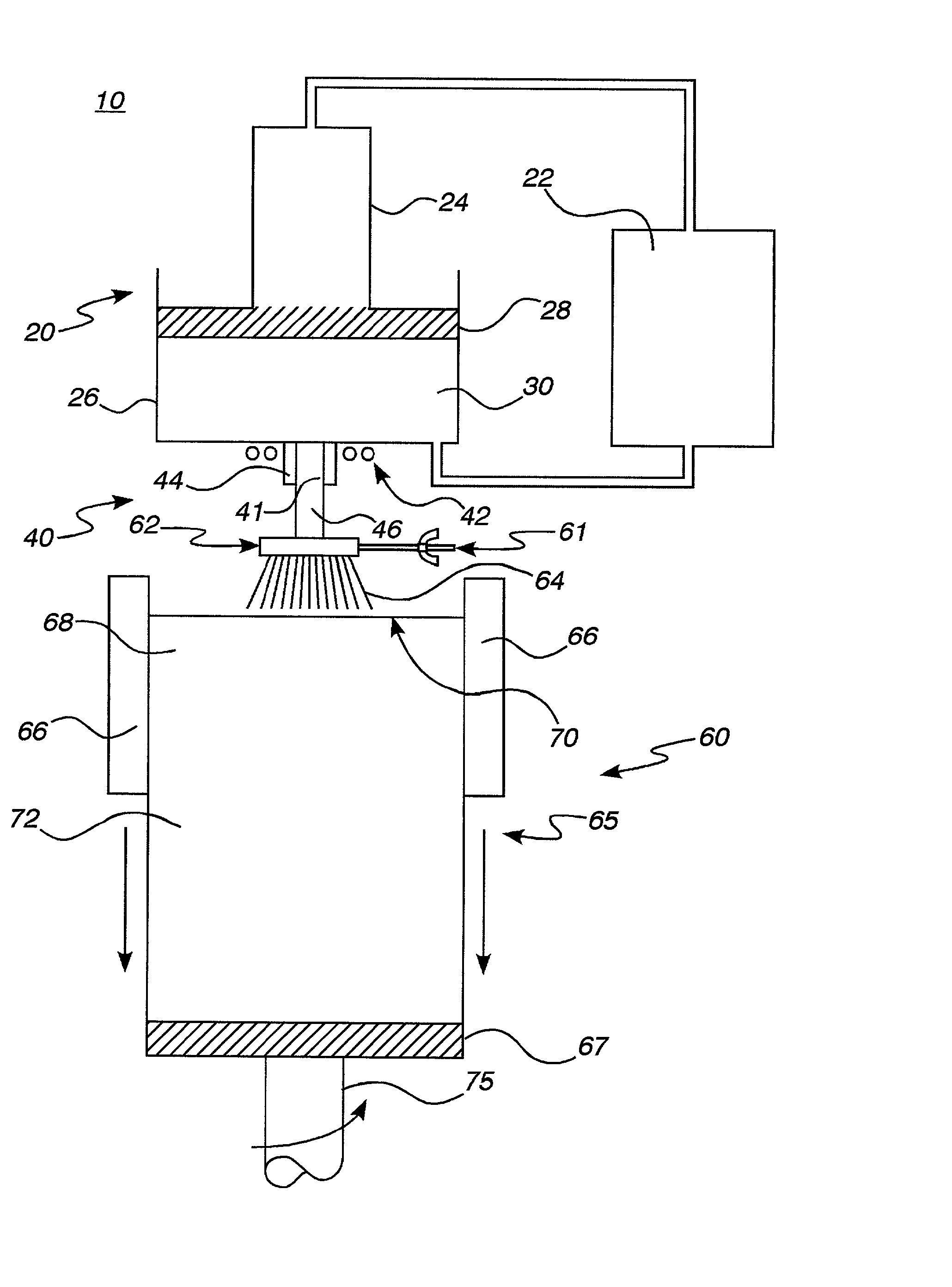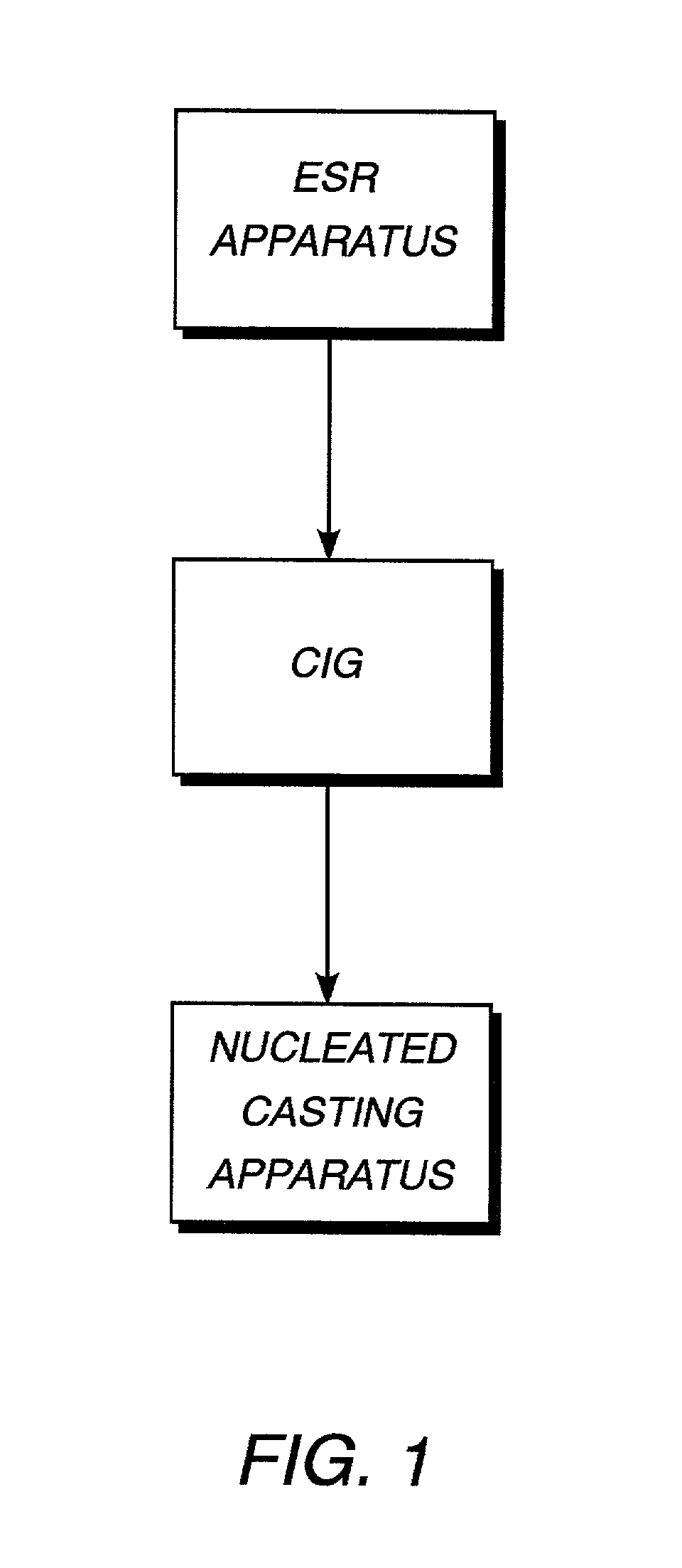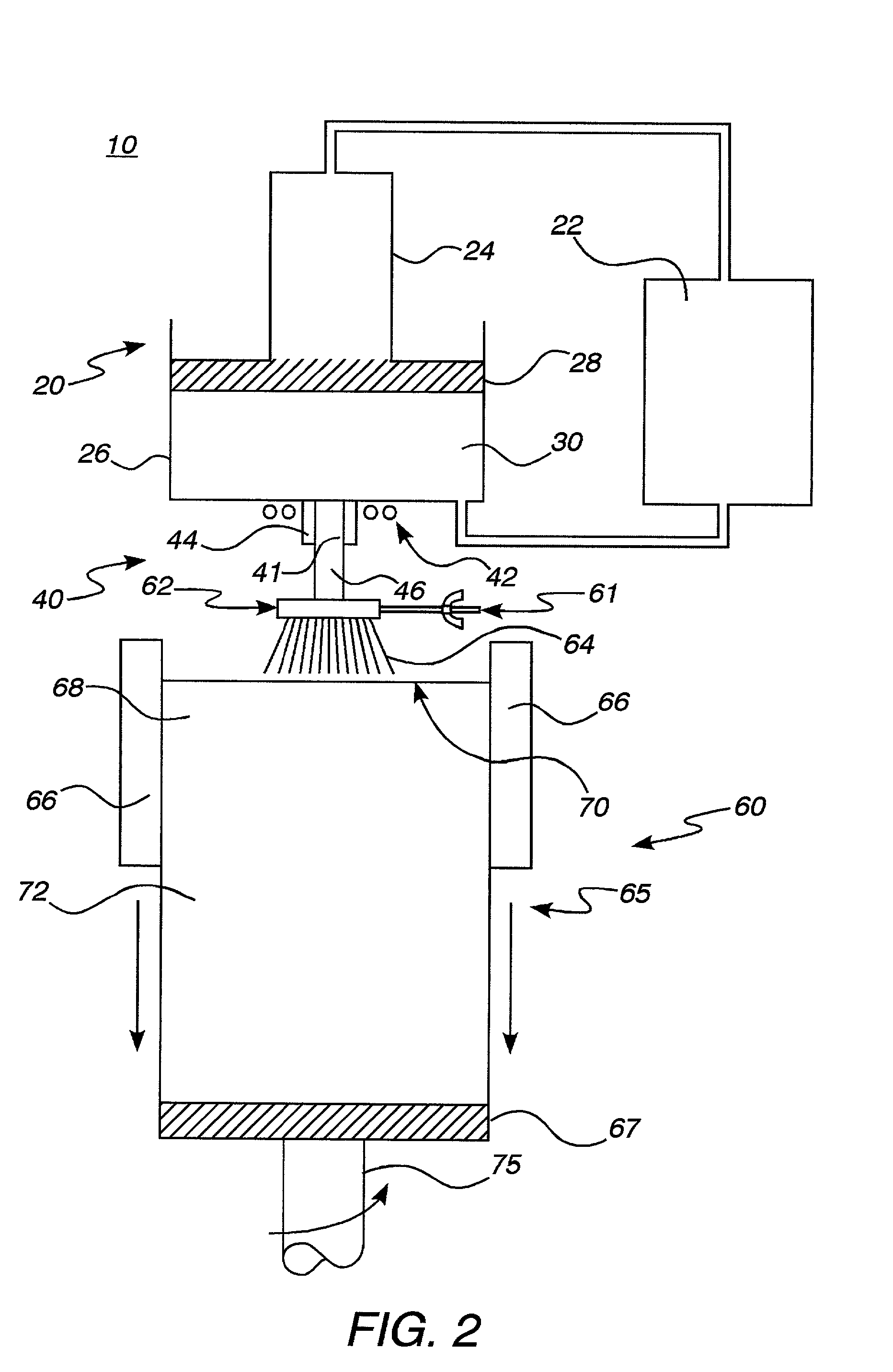Refining and casting apparatus
a casting apparatus and refining technology, applied in the field of refining casting apparatus, can solve the problems of difficult production, difficult to achieve a cooling rate, and metal materials are prone to segregation, and achieve the effect of minimizing high vapor pressure trace elements in the electrode material
- Summary
- Abstract
- Description
- Claims
- Application Information
AI Technical Summary
Benefits of technology
Problems solved by technology
Method used
Image
Examples
example 1
Computer Simulation
[0050] Computer simulations show that preforms prepared by the apparatus 10 of the invention will cool significantly faster than ingots produced by conventional processing. FIG. 3 (mass flow rate to caster of 0.065 kg / sec. or about 8.5 lb / min.) and FIG. 4 (mass flow rate to caster of 0.195 kg / sec.) illustrate the calculated effects on the temperature and liquid volume fraction of a preform cast by the apparatus 10 of the present invention using the parameters shown in Table 1 below.
1TABLE 1 Parameters of Simulated Castings Preform Geometry Cylindrical 20 inch (508 mm) preform diameter Inflow region constitutes entire top surface of preform Nucleated Casting Apparatus Operating Conditions Mass flow rates of 0.065 kg / sec. (as reported in the reference of footnote 1 below for a comparable VAR process) (FIG. 3) and 0.195 kg / sec. (FIG. 4) 324.degree. K (51.degree. C.) average temperature of the cooling water in the mold. 324.degree. K (51.degree. C.) effective sink tem...
example 2
Trial Casting
[0059] A trial casting using an apparatus constructed according to the invention was performed. The apparatus 100 is shown schematically in FIG. 5 and, for purposes of understanding its scale, was approximately thirty feet in overall height. The apparatus 100 generally included ESR head 110, ESR furnace 112, CIG 114, nucleated casting apparatus 116, and material handling device 118 for holding and manipulating the mold 120 in which the casting was made. The apparatus 100 also included ESR power supply 122 supplying power to melt the electrode, shown as 124, and CIG power supply 126 for powering the induction heating coils of CIG 114.
[0060] ESR head 110 controlled the movement of the electrode 124 within ESR furnace 112. ESR furnace 124 was of a typical design and was constructed to hold an electrode of approximately 4 feet in length by 14 inches in diameter. In the case of the alloy used in the trial casting, such an electrode weighed approximately 2500 pounds. ESR furn...
PUM
| Property | Measurement | Unit |
|---|---|---|
| mass ratio | aaaaa | aaaaa |
| diameter | aaaaa | aaaaa |
| diameter | aaaaa | aaaaa |
Abstract
Description
Claims
Application Information
 Login to View More
Login to View More - R&D
- Intellectual Property
- Life Sciences
- Materials
- Tech Scout
- Unparalleled Data Quality
- Higher Quality Content
- 60% Fewer Hallucinations
Browse by: Latest US Patents, China's latest patents, Technical Efficacy Thesaurus, Application Domain, Technology Topic, Popular Technical Reports.
© 2025 PatSnap. All rights reserved.Legal|Privacy policy|Modern Slavery Act Transparency Statement|Sitemap|About US| Contact US: help@patsnap.com



